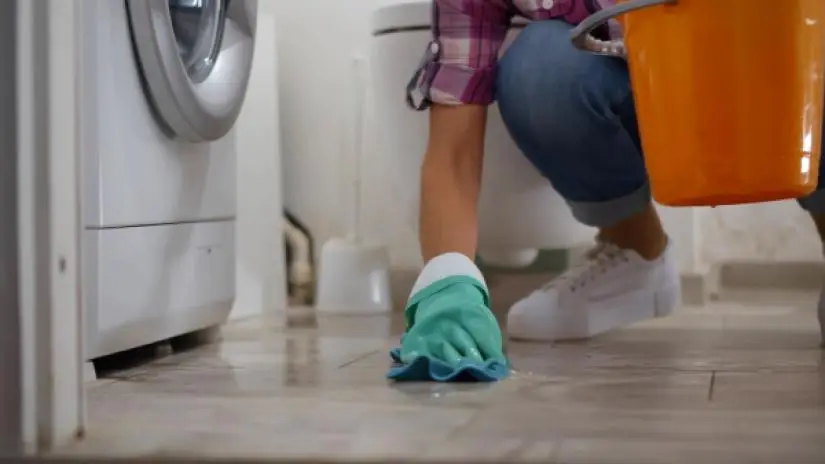
If your washing machine floods your home, prompt action is crucial. Rainbow Restoration recommends taking the following steps:
|
There are suds on the floor and water everywhere. The feeling of coming home to find the washing machine flooded the carpet is one of the worst. Not only are there dangers of electric shock and slipping on the sudsy floor, but after it’s all done, the water damage can continue to harm your home with mold and rot. Here’s what to do in the event of washing machine flooding, and how to avoid it next time.
What to Do When There’s a Washing Machine Flood
If your washing machine flooded, or is currently in the process, it’s important to act immediately to minimize the water damage:
- Close the main water supply to keep the water from pouring.
- Turn off the electrical breaker before unplugging the washer.
- If the leak seems to be coming from the plumbing connections to the washer, call an experienced plumber. If it seems to come from the washer itself, call an appliance repair expert.
- Call 24/7 water damage restoration expert, such as your local Rainbow Restoration®. We can thoroughly dry out the room with our specialized equipment and processes, and we’ll inspect structures and surfaces to recommend ways to prevent hidden degradation and mold growth.
- Protect your nearby belongings. Tie up curtains, put aluminum foil under furniture legs, and remove all books, clothes, shoes, and other items that could be stained.
- Call your insurance company. Your policy likely requires you to report the damage and losses as soon as you possibly can.
The speed of your response is key in this situation. It only takes 24 hours for mold to develop in wet carpet or damp drywall. Soaked carpet may need replacing, and wooden floors warp and rot after extended water saturation. Even tile flooring can become loose and develop mold or rot in the subfloor.
Why Is My Washing Machine Flooding?
It’s essential that you find out so you can prevent another flood. Your washing machine may be flooding for these common reasons:
- Too much detergent, especially if you have soft water
- Overloaded washing machine (more than 2/3 full)
- Faulty inlet or outlet hose
- Faulty valve
- Plumbing failure
Why Is My Washing Machine Leaking?
Perhaps your washer hasn’t flooded but you notice a little bit of water on the floor. Here are some common reasons your washer might be leaking:
- Lint-clogged floor drain
- Damaged or kinked external water supply hose
- Internal hose or drain pump
- Weak door seals (if a front-loading unit is leaking from the front)
- Loose hose connections
How to Prevent Washing Machine Flooding
You can’t rewrite history, but you can take measures to prevent another washer flood.
- Occasionally inspect the condition of the inlet and outlet hoses, looking for kinks, bulges, or cracks.
- If you have a front-loading washing machine, check the door seals periodically for tears or cracks.
- Don’t overfill your washer—the recommended load size is two-thirds of the drum, filled loosely.
- Don’t use too much detergent. To test if you’ve been adding too much soap, take a freshly laundered cloth (still wet) and put it in a bowl of hot water. If the water becomes sudsy, start using less detergent in your laundry.
Related Topic: Discover Signs of Bathroom Water Damage
Does Homeowners’ Insurance Cover Water Damage from Washing Machine?
Depending on your coverage plan and how the flooding happened, your homeowners’ insurance may or may not help pay for damages. While homeowners’ insurance policies commonly cover water damage from sudden or accidental plumbing leaks, they do not cover damage caused by poor (or nonexistent) maintenance.
How to Clean Up a Washing Machine Flood
Flooding from a washing machine can leave your home with severe damage. Even a minor leak can seep into the floors or walls and cause mold, air quality problems, and weak structures. To make sure your home remains a haven, trust our team of professionals at Rainbow Restoration® to clean up the mess and remediate the damage. Request an appointment online or give us a call us.
